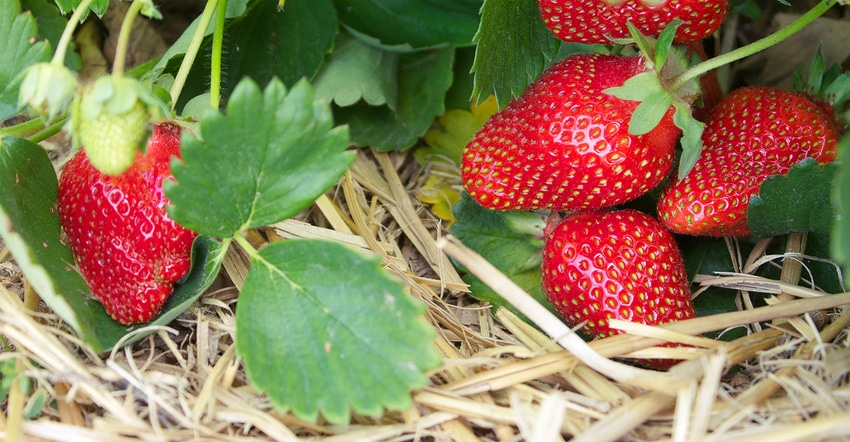November 20, 2018

Agriculture has seen its fair share of new startup companies in the last five years. With billions being invested in new ideas, a lot of brainpower is being put toward a range of new ideas. Recently, Farm Progress talked with Kevin Chen, CEO, Crop Enhancement, a venture-capital-funded company based in San Jose, Calif., with a different way to control crop pests: a spray-on barrier that keeps pests out of crops.
“Growers can protect crops by applying a biodegradable and transparent material that keeps pests from eating a crop,” Chen explains. “Our CropCoat product is a foliar-applied spray formulation.” The product is a proprietary mix containing natural ingredients.
Chen added that the physical barrier approach, which overall is not a new idea for crop protection but is novel when deployed in the form of a sprayable product, protects the crop at the point of damage where insects and diseases take hold.
For any ag startup, the aim is to get a foothold in the business through the path that brings the earliest opportunity for higher income. In many cases, that means high-value crops like fruits and vegetables. “We’ve been working with tropical crops and high-value specialty crops,” Chen explains. “The way that a crop such as cocoa or coffee gets damaged is that insects chew through the cocoa pod or coffee cherry and get into the middle of the fruit, where they can live. The problem with these particular crops is that once they’re inside, you can’t do much about them.”
Getting a start
Chen shared the company’s story, noting that Crop Enhancement was founded in late 2011 and in the early stages, tried several different approaches including controlled release fertilizer and other tech. But the company found it needed a more direct way to market. “We didn’t make the fertilizer itself, so it was difficult to get into that market,” he recalls.
The company switched gears and moved ahead with its CropCoat concept, which was created in-house and not licensed from another company. “We formulate the product, we work with partners to field-trial the product and we’re in the process of taking the product to market in 2019,” he says.
A key benefit designed into CropCoat is that it addresses maximum residue level, or MRL, concerns. “Food companies are very wary of crop residues and want little or no residues on their food,” he says. “Buyers are looking at ways to cut down on the amount of residuals on high-value crops.”
Just how does this new product deter the pest from dining on crops? “We’ve started to map out its modes of action on certain pests,” Chen explains, noting the company has been looking at the product’s impact on soft-bodied insects such as mites as well as and the early stages of larger insects including lepidoptera.
“For example, we know a lot about how spider mites get affected. Mites are pests that affect a host of fruits and vegetables,” he adds. “They are impacted in a few ways. At the beginning, when the product is applied, there is a smothering or immobilization mode on the surface of the crop — for example, on the leaves of strawberry plants. If they’re on the surface of the leaf, it will immobilize them in place. As the film dries, any new spider mites that arrive will face the physical film.”
Chen adds that mites who attempt to feed on the crop will instead dine on CropCoat. The material is not acutely toxic to the pest, but it’s also non-nutritive. “It’s like eating junk food, and they can’t make use of the nutrients eaten,” he explains. “We find that survival of mites goes down, and their fecundity declines significantly as well.”
Innovation and the future
Crop Enhancement recently concluded a successful demonstration trial of the product in cocoa with Cargill in Southeast Asia to improve the quality and productivity of that high-value tropical crop. And there’s potential in a range of fruit and vegetable crops, with broad-acre row crops sometime in the future.
“We do see a future in row crops, but we picked our battles on specialty crops where there is not as much focus, or there are bigger budgets for crop protection,” Chen says. “We haven’t spent a lot of time on row crops so far, but we see the value of that market, too.”
For example, lab tests with the tech against fall armyworm show promising signs for the product as part of a rotation of insecticides. “There are no silver bullets in insecticides anymore. Our product could be part of a rotation to help growers manage pest resistance,” he says.
Interested in this new mode of action? You can learn more at crop-enhancement.com.
About the Author(s)
You May Also Like






